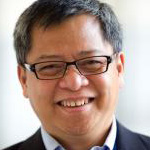 I grew up Bisayan and also spoke English.
I grew up Bisayan and also spoke English.
My encounters with Tagalog (Filipino) were peripheral, boring and forgettable: Joseph Estrada or Fernando Poe Jr movies on the one hand, and the formal teaching of Tagalog in grade school and high school. I copied my way through “Filipino” and listened to Erap’s grunts, but once we were out of the classroom or the movie theater, my friends and I switched back flawlessly to Bisayan.
My Bisayan did not synch well with Tagalog when I went to college. Classmates and friends in the “imperial capital” made fun of my accent and thereby forced me to start learning and conversing in Tagalog. As my visits to Ozamis became less frequent, I also began to “forget” my Bisayan and the nuances that gave it its character. I gradually became Manileño and Tagalog.
It took going to an American graduate school and writing a dissertation on Davao and Cotabato for me to return to my linguistic roots. And I have not left it ever since. Now I speak and even dream Bisayan. I have morphed back to being BisDak, a Bisayang Dako.
But in recovering my linguistic life, I also realized that Bisayan is not just any one of the many less-numbered tongues of the country. It is the other national language.
Over 21.1 million Filipinos speak Bisayan in its many variations, second only to Tagalog with 26 million speakers). It is the language of social interaction, trade, mass communications and even reading (if one is an avid follower of Bisaya magazine) of almost half of the communities of the islands.

The government has not given Bisayan the same institutional care and support at it has Tagalog. There are no courses on Bisayan (save in the Christian language schools) and the teachers’ training manual does not even devote a page to things like basic Bisayan terms or conversations. Neither has Manila made any effort to preserve Bisayan’s older edition.
This official apathy helps explain why the most comprehensive and still unsurpassed Bisayan-English dictionary was compiled – not by a Filipino – but a polyglot American academic aided by his late Cebuano wife and the coterie of people he met as a researcher in Cebu. I know; I was his teaching assistant for a year.
Only recently has the Department of Education mandated that Bisayan kids be taught their language, but only on a limited basis. Like it or not, the official language policy remains to promote Tagalog (“Filipino”); the other languages can languish without state support or make the necessary adjustment (i.e., dilute their vocabularies).
Finally, until recently, the language-of-politics (other than English) has always been Tagalog and everyone – from politician to the voter – had to learn how to speak it. Not anymore.
Rodrigo Duterte’s elections changed all that and Bisayan has entered the national public discourse.
In his speeches, Duterte exerts effort to speak in fluent Tagalog and even English, but once he faces a Bisayan audience, he becomes more relaxed, even unguarded. This is what the YouTube videos of President Duterte campaigning in the Visayas and Mindanao convey to us.
A campaign speech in Danao, for example, evoked cheers but also laughter because the slang, metaphors, imageries and funny and vulgar asides the mayor used is what the people of Danao hear and blurt out every day. He even knew the “silent codes” associated with Danao’s thriving illegal gun industry, leading to guarded cheers from his audience.
“Kitang mga Bisaya” was how Digong put it.
And just how much non-Bisayans understood the speech? Watch the clueless Alan Peter Cayetano just standing there, unaware of what Duterte was saying, and this was not just the humor but also his threats against the druggies and Manila elites. His mushy-headedness represented a larger nescience, caused in part by Tagalog-as-the-de facto-national-language. It is a metropolitan philistinism that has been the source of many a complaint from the South (Imperial Manila!).
This, alas, has ceased to be the case. If you – a non-Visayan – want to understand Duterte seriously and sincerely, so as to be able to engage, praise, criticize, condemn him effectively, you have to learn the language. And to do so, you have first to recognize that Bisayan is not just a local argot; it is the second national language.
Translation is fine, as long as this is only the first step. You want to understand a Bisdak like Duterte and his fellow Bisayans. You have to become one yourself.
You, therefore, cannot claim that learning the language is mahirap (hard). Just watch these 5 American Mormons, a young Filipina-German, and a US Marine speak Bisayan fluently:
If a non-Bisayan like you cannot match these foreigners’ love for the language, then we are in the pits. – Rappler.com
Patricio N. Abinales teaches Food and Culture in Asia.